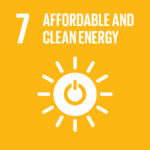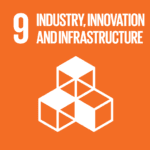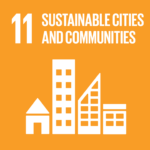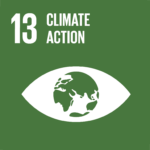Under Decree No. 58, renewable energy projects equipped with electricity storage systems and connected to the national grid will be prioritized, particularly during peak demand hours.
Vietnam has taken a decisive step toward strengthening its renewable energy sector with the introduction of Decree No. 58/2025/ND-CP. The new decree, which aligns with the Electricity Law, lays out regulatory priorities and financial incentives to accelerate the development of wind, solar, and new energy projects.
RELEVANT SUSTAINABLE GOALS




As Vietnam’s energy demand surges, the government is ramping up efforts to transition toward a cleaner and more resilient power grid. The decree prioritizes projects with energy storage systems and national grid connectivity, while also encouraging investments in green hydrogen and ammonia-based power generation.
Prioritizing Renewable Energy with Grid-Connected Storage
Under Decree No. 58, renewable energy projects equipped with electricity storage systems and connected to the national grid will be prioritized, particularly during peak demand hours. This initiative aims to enhance grid stabilityby ensuring that clean energy sources can provide reliable electricity even when natural generation fluctuates.
However, the decree specifies that this priority does not apply to self-produced and self-consumed electricity, focusing instead on large-scale, grid-connected projects that contribute to Vietnam’s overall energy supply.
Vietnam is doubling down on research and technological advancements in solar panels, wind turbines, and power conversion equipment. The decree reinforces the government’s commitment to developing local production capabilities in renewable energy technologies, aligning with Article 8 of the Electricity Law.
By prioritizing homegrown innovation, Vietnam aims to reduce reliance on foreign imports, strengthen its clean energy supply chain, and create jobs in high-tech manufacturing.
Incentive Mechanisms for Green Hydrogen and Ammonia Projects
The decree introduces strong incentives for new energy projects that generate electricity entirely from green hydrogen, green ammonia, or a combination of both. To qualify, projects must be the first of their kind in their respective categories and must supply power directly to the national grid.
The incentives include:
1. Maritime Area Use Fee Exemption & Reduction
- Exemption from maritime area use fees during the capital construction phase (up to three years).
- A 50% reduction in fees for the next nine years.
2. Land Use Fee Exemptions
- Full exemption from land use and rental fees during the capital construction phase (up to three years).
- Additional land use reductions applied according to Vietnam’s investment and land regulations.
3. Long-Term Electricity Purchase Guarantee
- A commitment to purchase at least 70% of the contracted electricity output during the principal loan repayment period, up to 12 years.
- This guarantee, however, does not apply if the project fails to meet minimum output requirements due to:
- Technical issues
- Grid constraints
- Load demand limitations
4. Policy Adaptation for Future Energy Markets
- After the initial incentive period, projects will be subject to prevailing policies and market conditions at the time of contract expiration
These incentives demonstrate Vietnam’s ambition to position itself as a regional leader in green hydrogen and ammonia power, setting the foundation for a low-carbon energy transition.
A Strategic Shift Toward Clean Energy
Alongside broader clean energy reforms, Thu Dau Mot Water JSC has submitted a document to the State Securities Commission (SSC) and the Ho Chi Minh Stock Exchange (HOSE) concerning rooftop solar power purchasing contracts.
The filing suggests ongoing regulatory discussions regarding contractual terms and pricing mechanisms for distributed solar power generation, indicating that Vietnam’s renewable energy policies remain in active development.
With Decree No. 58/2025/ND-CP, Vietnam is not only bolstering its renewable energy ambitions but also creating a favorable environment for domestic and foreign investments in clean energy.
By prioritizing energy storage, investing in local innovation, and offering financial incentives for next-generation power sources, the country is reinforcing its commitment to net-zero emissions and a sustainable energy future.
You may also be interested in :
Vietnam’s Bold Push For Rooftop Solar Power : Building A Cleaner, Resilient Energy Future



